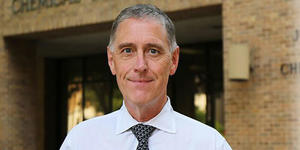"Advanced Separation Membranes: Historical Development and Future Trends" by Benny Freeman

Abstract
For thousands of years, separation of mixtures has been practiced by humans. In Meteorologica, Aristotle noted that “salt water when it turns into vapour becomes sweet, and the vapour does not form salt water when it condenses again. This I know by experiment.” [1] In 1752, Abbé Jean Antoine Nollet reported separating mixtures of “spirits of wine” using a pigskin bladder as a membrane. [2] In 1829, Sir Thomas Graham reported that membranes made from natural rubber could remove oxygen from air, which he called “dialyzing” air: “This dialyzed air rekindled glowing wood, so as to illustrate the direct separation of oxygen gas from atmospheric air.” [3] From these early observations have sprung modern industrial separations that can efficiently desalinate water, purify gases for chemical and petrochemical applications, and remove CO2, implicated in global warming, from the air. This presentation will trace the history of separation membranes from their ancient roots to modern times and provide a view of the future of such membranes to address emerging and as yet unsolved separations problems important in areas such as lithium mining for exploding demand for lithium ion batteries for cars, electronics, and more.
References
[1] Aristotle with E.W. Webster, trans., Meteorologica, in: Ross, W. D., ed., The Works of Aristotle, vol. 3, (Oxford, England: Clarendon Press, 1931), Book III, pp. 358-9.
[2] Jean Antoine (Abbé) Nollet, “Investigations on the causes for the ebullition of liquids,” Journal of Membrane Science 100 (1995) 1-3.
[3] Thomas Graham, On the absorption and dialytic separation of gases by colloidal septa Part I. - Action of a septum of caoutchouc, Journal of Membrane Science, 100 (1995) p. 27-31.
Biography
Benny Freeman is the William J. (Bill) Murray, Jr. Endowed Chair of Engineering in the Chemical Engineering department at The University of Texas at Austin. He is a professor of Chemical Engineering and has been a faculty member for 30 years. He completed graduate training in Chemical Engineering at the University of California, Berkeley, earning a Ph.D. in 1988. In 1988 and 1989, he was a postdoctoral fellow at the Ecole Supérieure de Physique et de Chimie Industrielles de la Ville de Paris (ESPCI), Laboratoire Physico-Chimie Structurale et Macromoléculaire in Paris, France. Dr. Freeman was a member of the chemical engineering faculty at NC State University from 1989 – 2002, and he has been a professor of chemical engineering at The University of Texas at Austin since 2002. Dr. Freeman’s research is in polymer science and engineering and, more specifically, in mass transport of small molecules in solid polymers. His research group focuses on structure/property correlation development for desalination and gas separation membrane materials, new materials for hydrogen separation, natural gas purification, carbon capture, and new materials for improving fouling resistance in liquid separation membranes. He leads the Center for Materials for Water and Energy Systems (M-WET), a DOE Energy Frontier Research Center and serves as Challenge Area Leader for Membranes in the National Alliance for Water Innovation (NAWI), a five-year, DOE sponsored Energy-Water Desalination Hub to address critical technical barriers needed to radically reduce the cost and energy of water purification.
His research is described in nearly 450 publications and 30 patents/patent applications. He has co-edited 5 books on these topics. He has won a number of awards, including a Fulbright Distinguished Chair in Disruptive Separations (2017), Fellow of the North American Membrane Society (NAMS) (2017), the Distinguished Service Award from the Polymeric Materials: Science and Engineering (PMSE) Division of the American Chemical Society (ACS) (2015), Joe J. King Professional Engineering Achievement Award from The University of Texas (2013), American Institute of Chemical Engineers (AIChE) Clarence (Larry) G. Gerhold Award (2013), Society of Plastics Engineers International Award (2013), Roy W. Tess Award in Coatings from the PMSE Division of ACS (2012), the ACS Award in Applied Polymer Science (2009), AIChE Institute Award for Excellence in Industrial Gases Technology (2008), and the Strategic Environmental Research and Development Program Project of the Year (2001). He is a Fellow of the AAAS, AIChE, ACS, and the PMSE and IECR Divisions of ACS. He has served as chair of the PMSE Division of ACS, chair of the Gordon Research Conference on Membranes: Materials and Processes, President of the North American Membrane Society, Chair of the Membranes Area of the Separations Division of the AIChE, and Chair of the Separations Division of AIChE. His research has served as the basis for several startup companies, including Energy-X and NALA Systems.
Reilly Lecture sponsored by the Department of Chemical and Biomolecular Engineering